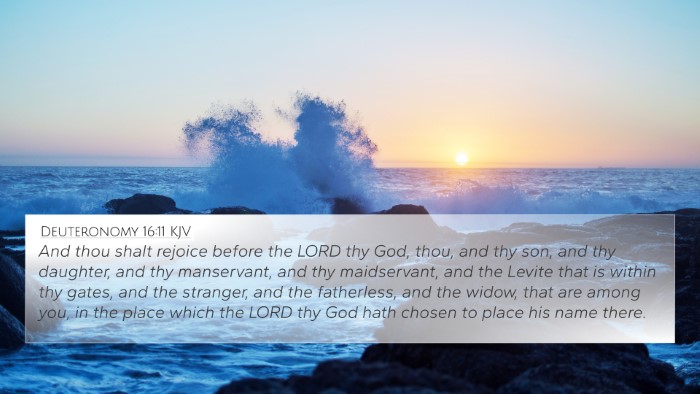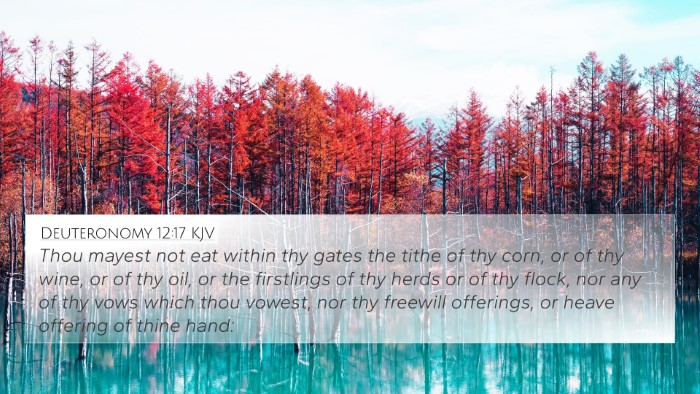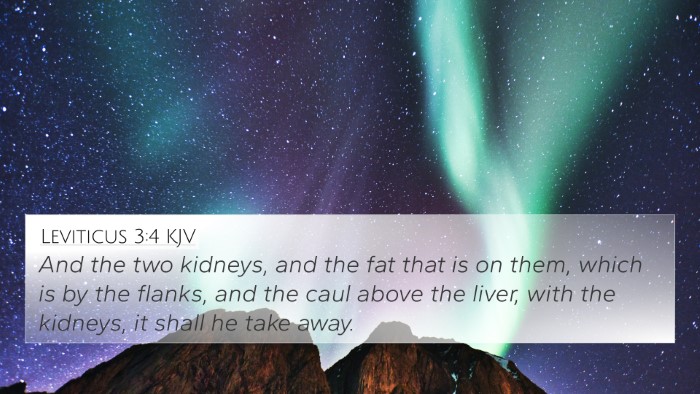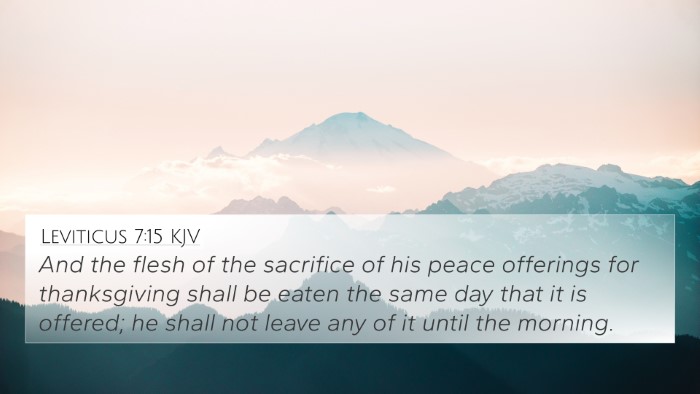Understanding 1 Samuel 1:4
1 Samuel 1:4 states, "And when the time was that Elkanah offered, he gave to Peninnah his wife, and to all her sons and her daughters, portions." This verse plays a crucial role in setting the scene for the personal and familial dynamics within the narrative of Hannah, Elkanah, and Peninnah. To fully grasp its meaning, we can delve into interpretations provided by public domain commentaries, which shed light on the relationships and thematic elements present in this scripture.
Commentary Insights
-
Matthew Henry:
Henry notes the significance of Elkanah's offerings and how they reflect the culture of family and worship in Israel during this period. The act of offering not only denotes religious responsibility but also highlights the tensions within his household. Hannah, being favored less in the eyes of Elkanah and burdened by her inability to bear children, is contrasted with Peninnah's fertility.
-
Albert Barnes:
Barnes emphasizes the ancestral duty that Elkanah performed in offering sacrifices, which was a customary practice. He views Peninnah’s role as that of a rival to Hannah, showcasing the strife that can arise within a polygamous arrangement. Barnes interprets the family's struggle for standing and recognition, depicting an emotional landscape where Hannah's distress becomes evident.
-
Adam Clarke:
Clarke elaborates on the nature of the offerings. He describes how Elkanah's dedication to his family through gifts signifies both love and favoritism. Additionally, he draws attention to Peninnah's reaction to Hannah's barrenness and how this reflects the broader theme of social status—from which children, especially sons, derive their significance in society.
Key Themes and Connections
The nuances in this verse offer an opportunity to explore various thematic connections in the Bible. The dynamics of rivalry, the importance of family lineage, and the deep emotional struggles faced by individuals in their quests for fulfillment are all significant themes that resonate throughout scripture.
Bible Verse Cross-References
To further deepen your understanding of 1 Samuel 1:4, here are notable cross-references:
- Genesis 29:30-31: The rivalry between Leah and Rachel, another instance of family conflict due to childbearing.
- 1 Samuel 1:5: The following verse adds depth to Hannah's situation, where Elkanah gives Hannah a double portion.
- Deuteronomy 21:15-17: Discusses the rights of firstborn sons and inheritance, relevant to familial tensions.
- Psalms 113:9: Highlights God's role in uplifting the barren, connecting to Hannah's plight.
- Luke 1:46-55: Mary's song juxtaposes Hannah’s story, emphasizing themes of barrenness and God's intervention.
- Isaiah 54:1: A prophecy encouraging the barren to rejoice, underlining the hope found in faith despite present anguish.
- Hebrews 11:11: Highlights women of faith like Sarah and Hannah who trusted God for children.
- 1 Peter 3:1-6: Discusses the role and relationship of women in faith, reflecting Hannah’s character.
- Romans 4:20-21: Speaks to faith and trust in God’s promises, similar to the faith displayed by Hannah.
- Galatians 4:27: References the joy of the barren, echoing themes of hope and fulfillment in God.
Thematic Bible Verse Connections
The themes illustrated in 1 Samuel 1:4 find resonance across various books of the Bible, showcasing how personal struggles intertwine with divine purposes. Understanding these connections can illuminate broader biblical narratives, especially surrounding themes of faith, prayer, and God's providential care.
Tools for Bible Cross-Referencing
Many tools and methods exist for those looking to engage deeply with scripture through cross-referencing:
- Bible Concordance: Useful for identifying words and themes across different scriptures.
- Bible Cross-Reference Guide: Provides thematic connections that enhance understanding.
- Cross-Reference Bible Study: A method for examining relationships between verses systematically.
- Bible Chain References: A way to create links between verses based on common themes.
- Bible Reference Resources: Comprehensive guides that provide insights on interconnected scriptural themes.
Conclusion
1 Samuel 1:4 is not just a historical account; it serves as a rich tableau of the interplay of human emotions within the sovereign design of God. By engaging with the commentaries and recognizing the interconnections within the Bible, one can gain profound insights into the significance of this verse. The ongoing dialogues between different passages underscore the importance of recognizing thematic links throughout scripture, painting a holistic picture of faith and divine purpose.







